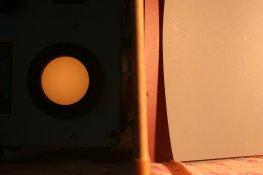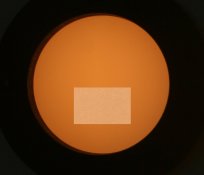I just did this set of readings in my home ...
Hi, thanks for all the data points - I know it's quite a bit of work. I spent some time going through the results, thinking that there would be some likely explanations for the wide variation, but I'm not really seeing anything. (One result I would point out, though, is the "incident hemisphere" reading in col F - it seems to be out of place, and I wonder if that might have been a typo - should be 8.9 instead of 7.9.)
Something that particularly bothers me is the differences in reflective readings between the "spot card" and the "EZ Balance." From what I follow, these are two different grey card materials, one read with a spot meter and the other with a different (?) meter. But given that the geometry seems to be the same, I don't see how the readings can change their relationship (sometimes the "spot card" is ~ 1/2 EV brighter, other times it is about the same.) So something looks fishy to me - is it maybe related to a specular reflection, or perhaps a spectral response difference, or even blocking some light with the non-spot meter.
All in all, though, some interesting data demonstrating the difficulty of good, reliable readings. As a note I've spent a lot of years working with high-volume portraiture (in dedicated studios), where I've been pretty involved in the procedures and setup. At one time we had lots of issues with grey card results, etc. Eventually we set up our studios with a "procedure" for shooting grey cards - they are clipped to a stand at a specific height over the "subject position," perpendicular to the camera (which is at a certain height). This means that nothing is close to the grey card to reflect unwanted light on to it, and the camera won't see spectral reflections. We also used mainstream lighting styles, where the lighting (main and fill) is mainly frontal. Under these conditions, it was very predictable where the grey card densities (read on film) were going to end up based on an incident meter reading. Nevertheless, we never (ok, very seldom) let a new studio go "live" without evaluating test film in the home office.
So my "substantial" experience using incident meters in mainstream studio configurations is that they are very reliable in setting up camera exposure, and the results closely track with grey card densities under the specified shooting conditions.
But when one varies from this, no guarantees - it goes to the knowledge of the photographer to get proper readings according to what they want. Let me make one example. One sort of test lighting we had used was with overhead rail systems with suspended lights. The track for main light was on an arc around the "subject spot." So I can move this light anywhere from near the camera to straight out to the side of the subject, with the light-to-subject distance staying constant. So essentially you would say that the (human) subject exposure does not change. Yet if you took "standard" meter readings, or measured grey card densities, they would vary drastically, EVEN THOUGH THE PROPER SUBJECT EXPOSURE DOESN'T CHANGE, at least not substantially. Again, the knowledge of the photographer is important when we vary from the mainstream frontal lighting configurations.












 of other posts, the OP was measuring apples and oranges. An incident light meter or metering dome reads illumination and reflected light meter measures reflectance. Both are valid methods of operation but should not be compared to each other except in cases where known standards are metered to calibrate or check calibration.
of other posts, the OP was measuring apples and oranges. An incident light meter or metering dome reads illumination and reflected light meter measures reflectance. Both are valid methods of operation but should not be compared to each other except in cases where known standards are metered to calibrate or check calibration.
 ...so you use no meter reading?!
...so you use no meter reading?! But the data point which you questioned is indeed unchanged!
But the data point which you questioned is indeed unchanged!





